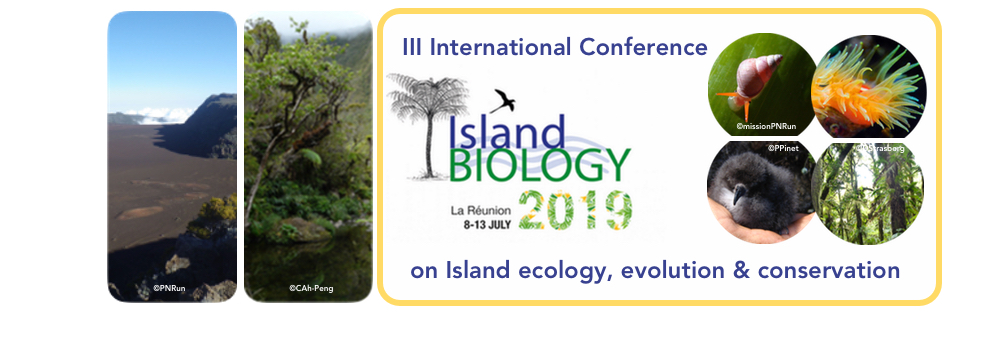Species introductions on islands result into heterogeneous assemblages with short common biogeographic histories, yet potentially redundant ecological functions. How native and feral species interact over resource and habitat in the absence of long co-evolutionary histories presides to the deterministic part of assembly processes in these assemblages, in turn affecting strategies to preserve indigenous biodiversity. Critical to this question are the ability of introduced species to cope with novel environments and their degree of niche separation with native species, which may or not permit local invasion. These processes can be investigated by studying shifts in alien species' ecological trait space between their native and introduction ranges, and its degree of overlap with co-occuring native species on introduction grounds, accounting for the depth of their common phylogenetic histories. Previous results suggested that insular assemblages are driven either by past competitive exclusion, habitat filtering or niche displacement associated with post-introduction lability in species' trait space. We attempt to disentangle these processes in New Zealand bird assemblages, which uniquely mix species from multiple biogeographical origin and range from narrow endemism to colonizing alien birds. New Zealand thus hosts some of the world's most peculiar bird assemblages, albeit without obvious conflicts among species with differing local histories. We use a multispecies hierarchical bayesian model fitted on 501 point counts to investigate niche separation between 21 alien and native species through their responses in abundance to habitat composition at landscape (proportion of native and man-modified habitats) and local scales (forest composition and vertical structure). Complementarily, we investigate the roles of species' ecological trait space and biogeographical origins in these responses through an ordination framework constructed with literature data. Our results support habitat filtering operating simultaneously at multiple scales, associated with trait-based separation between native and alien species. We further present preliminary results on the contributions of biogeographic origin and phylogenetic relatedness to habitat-trait associations in New-Zealand bird assemblages, and eventually propose avenues to refine these results through novel curve analysis methods. Our framework aims to integrates functional and biogeographic perspectives on novel insular communities to the benefit of a better understanding and conservation of island biodiversity.

|
|
|
|
A functional biogeography approach to insular bird communities with mixed-origin species
1 : Centre d'Ecologie Fonctionnelle et Evolutive
(CEFE)
CNRS, PSL Research University, EPHE, UM, SupAgro, IRD, INRA, UMR 5175 CEFE, F-34293 Montpellier, France
919 route de Mende -
France
2 : Dynafor, INPT, EI Purpan, INRA, Univ. Toulouse
Institut national de la recherche agronomique (INRA)
Auzeville -
France
3 : Scion (New Zealand Forest Research Institute)
* : Corresponding author
PO Box 29237, Christchurch 8440, New Zealand. -
New Zealand
|
| Online user: 27 | RSS Feed |

|
 PDF version
PDF version